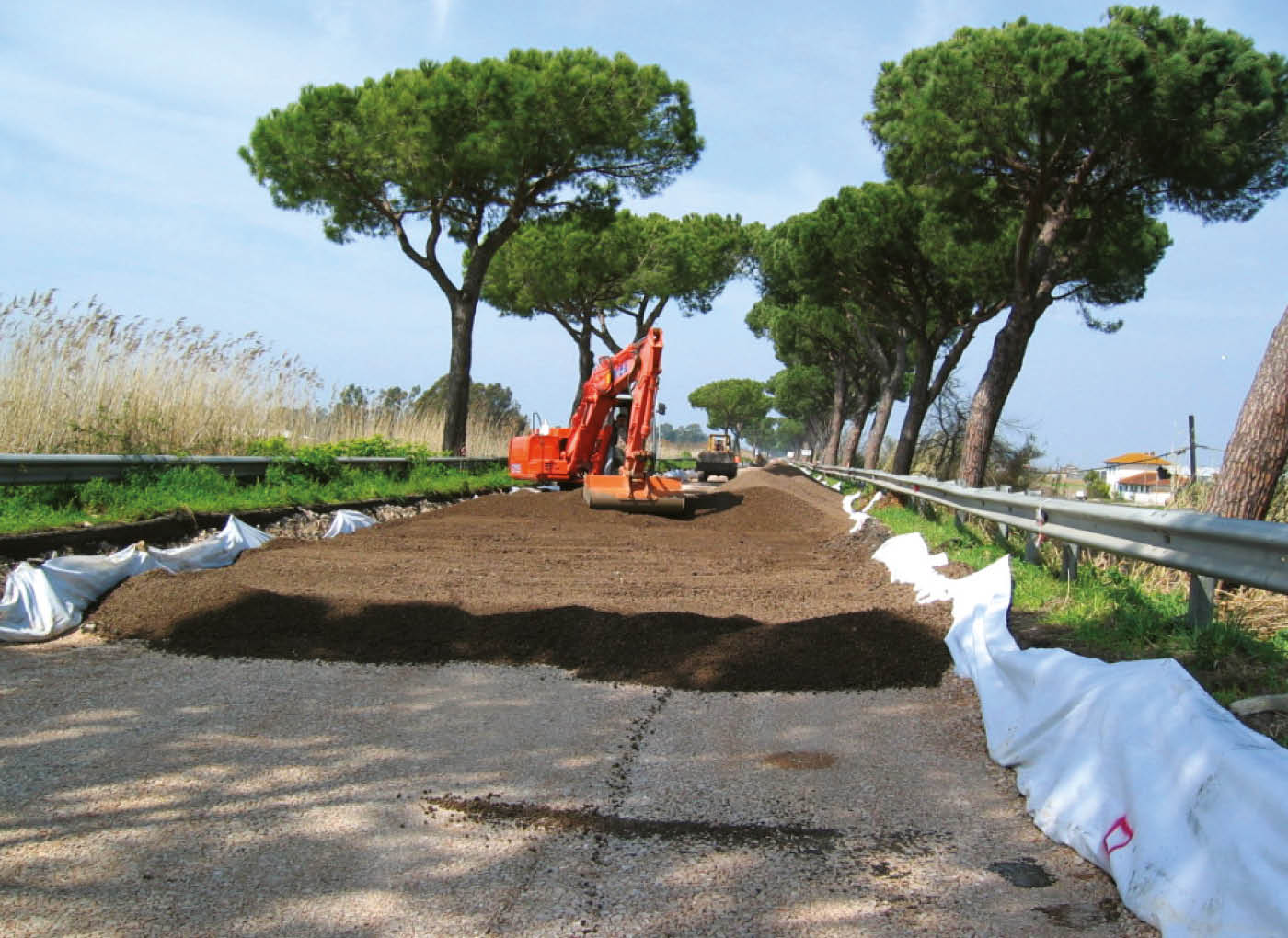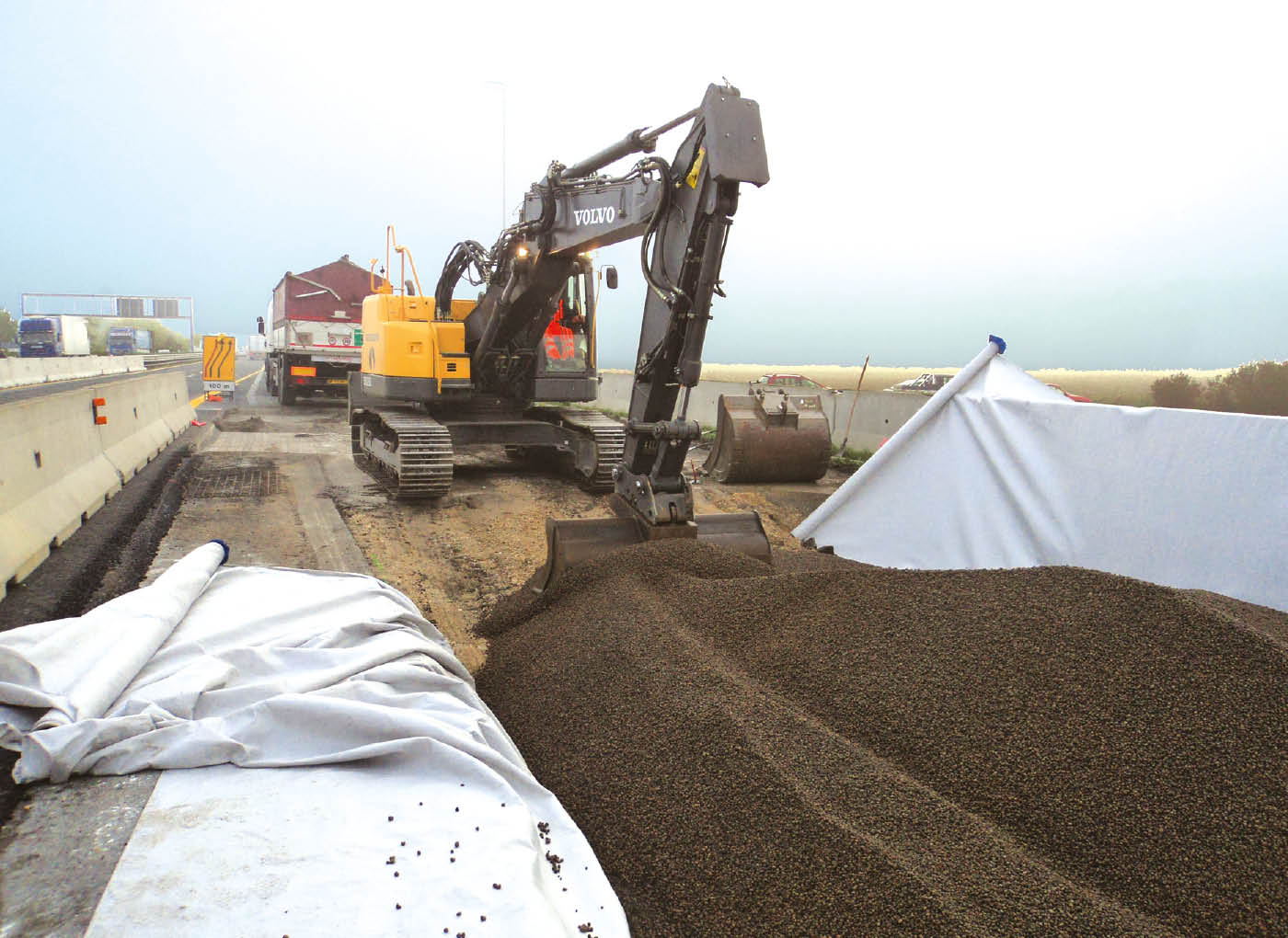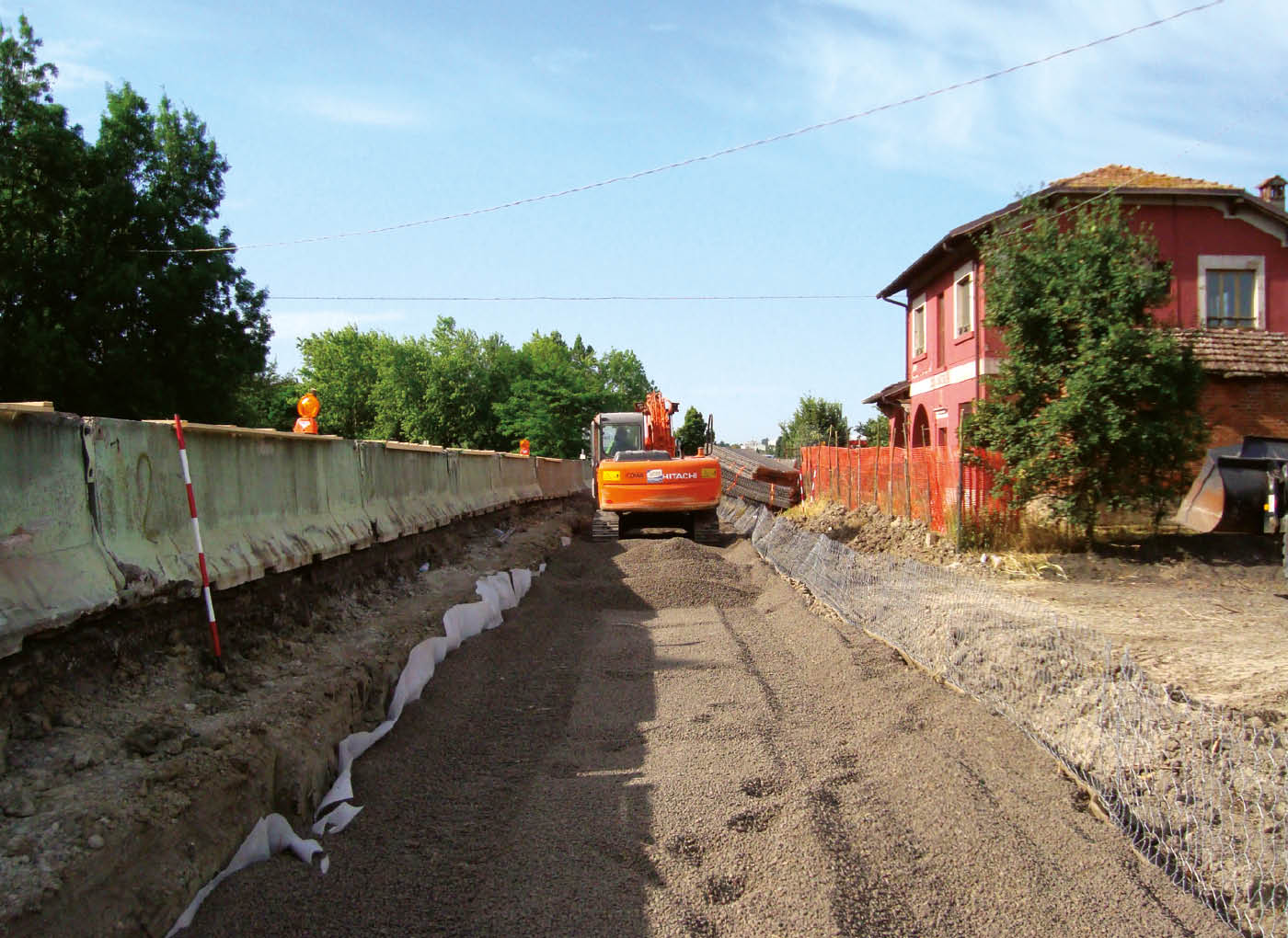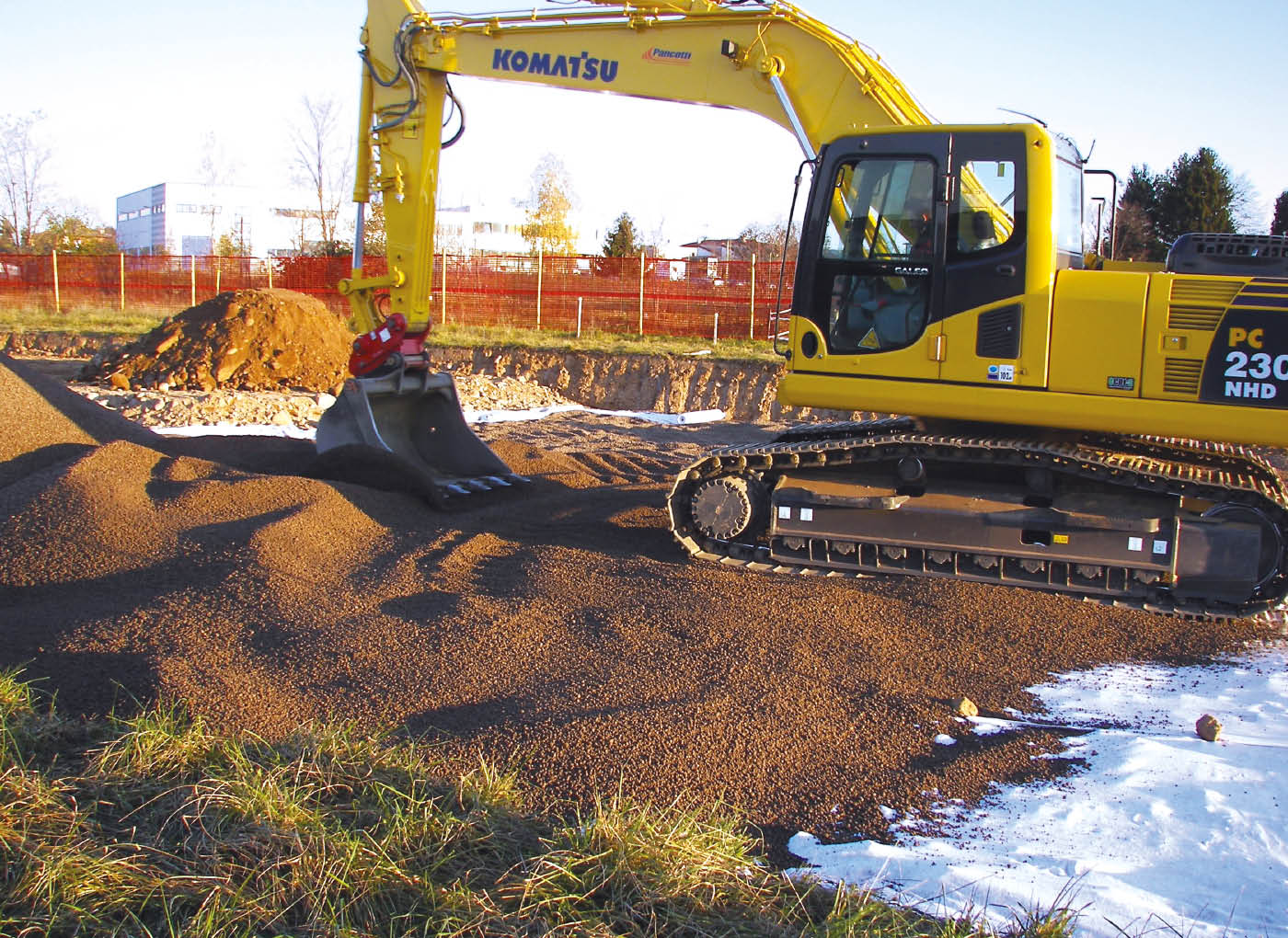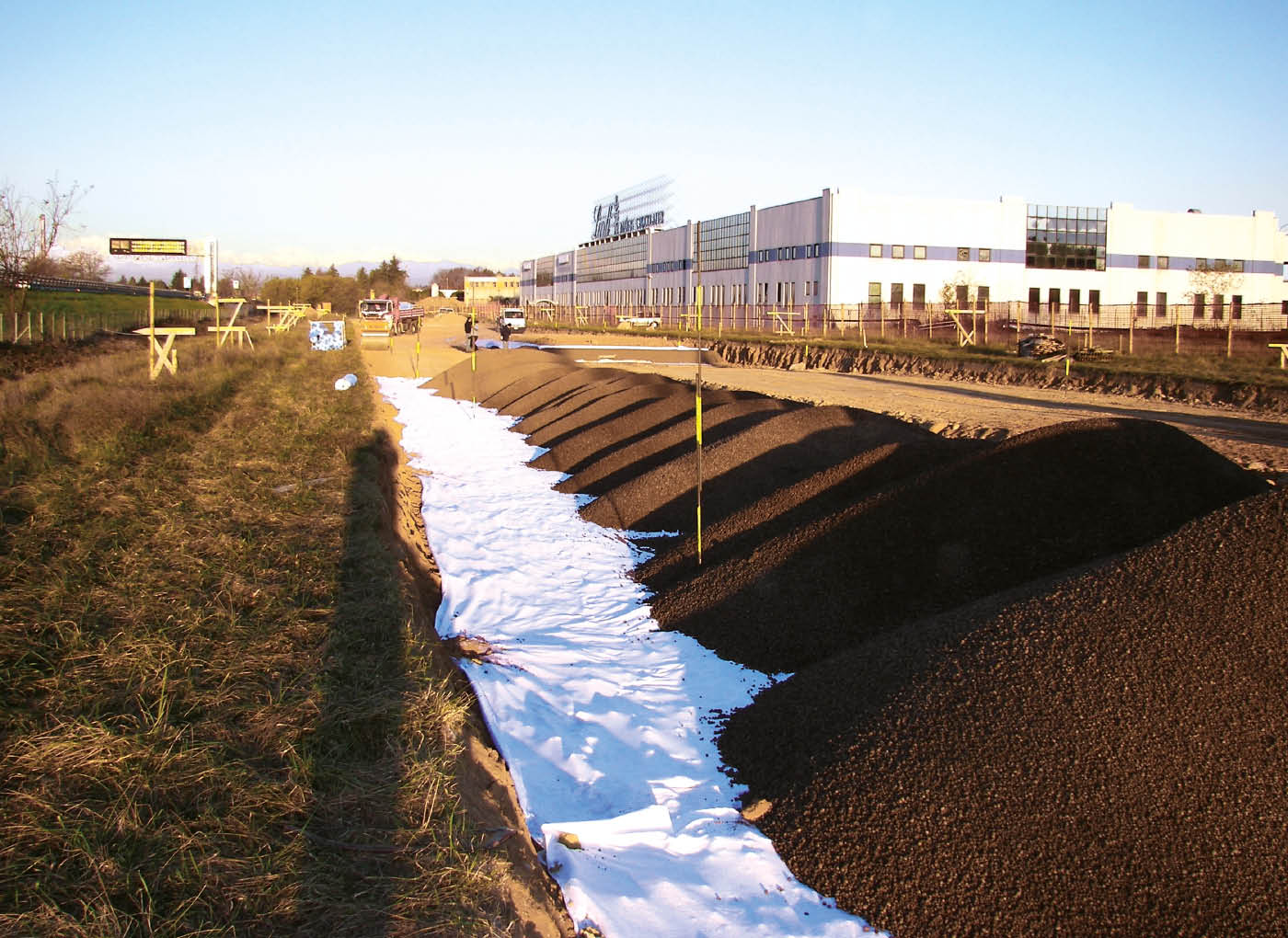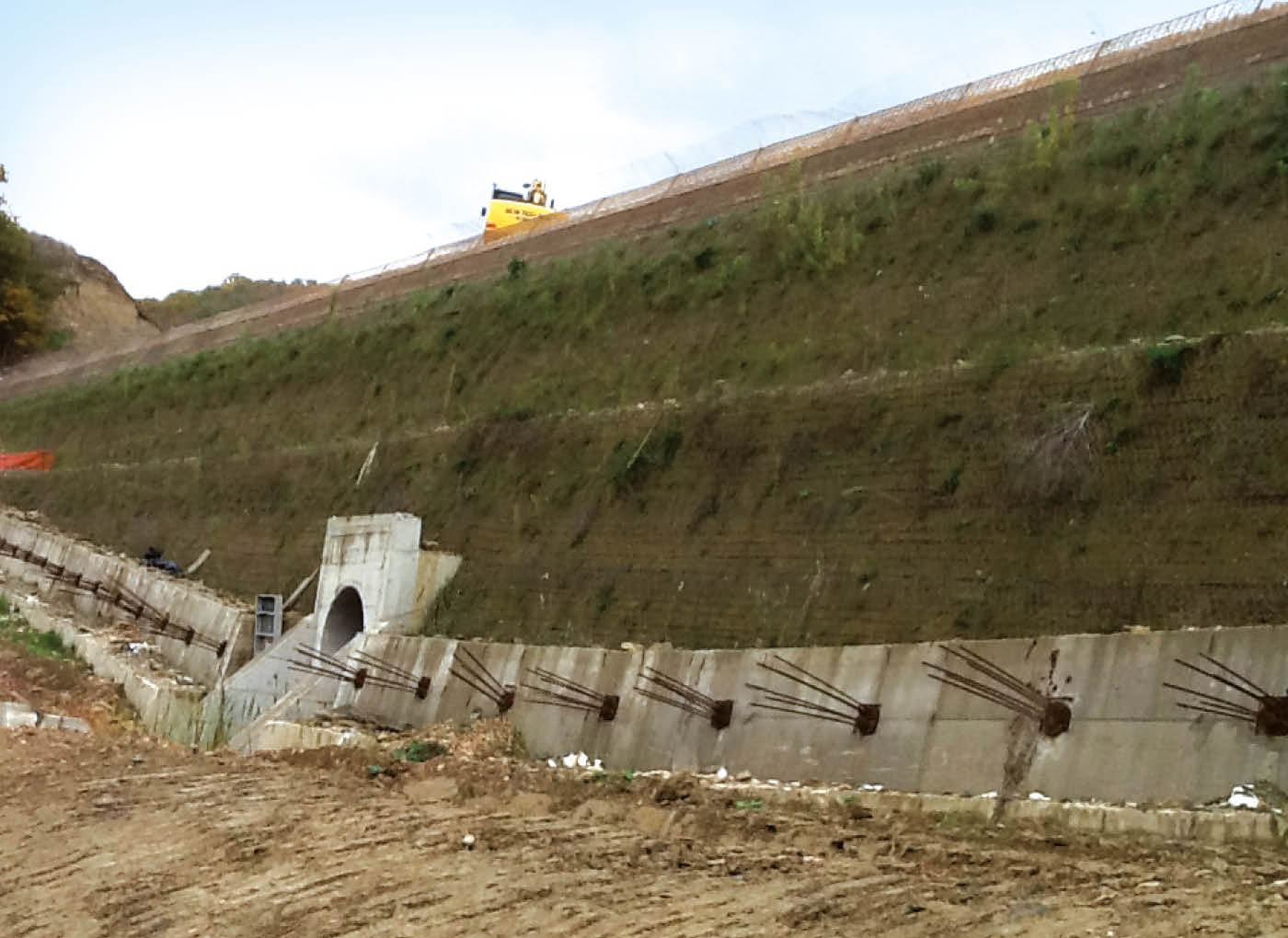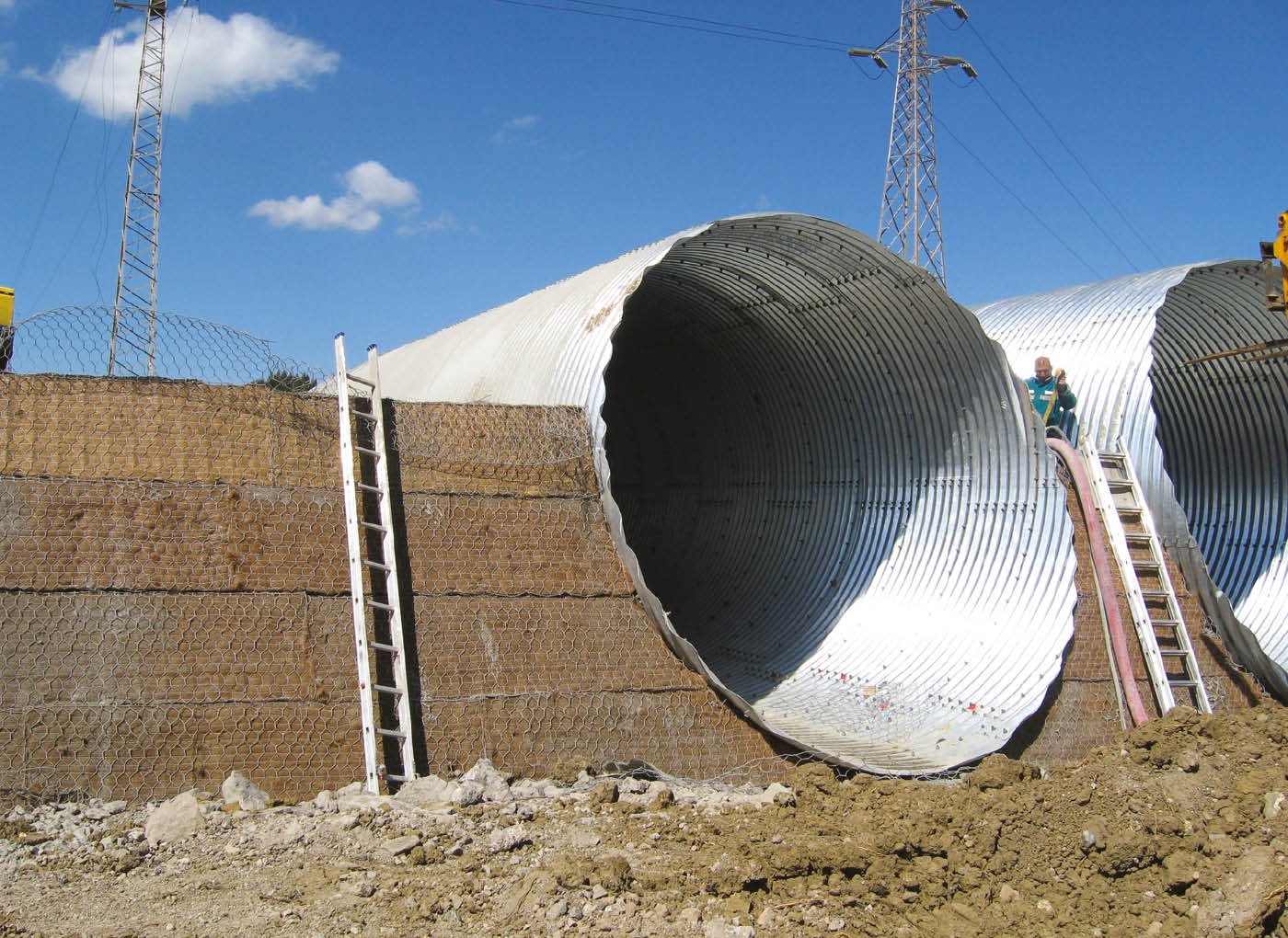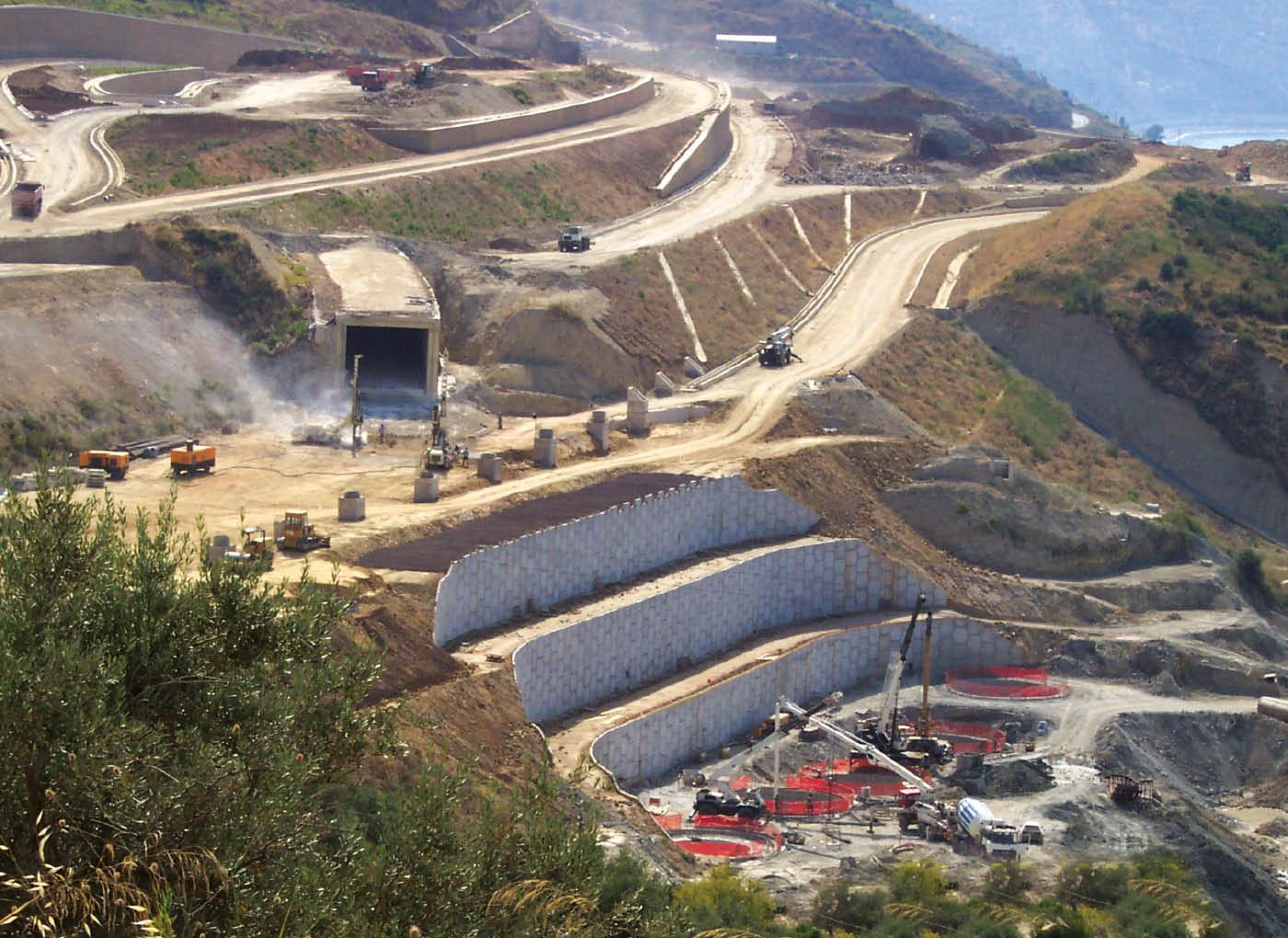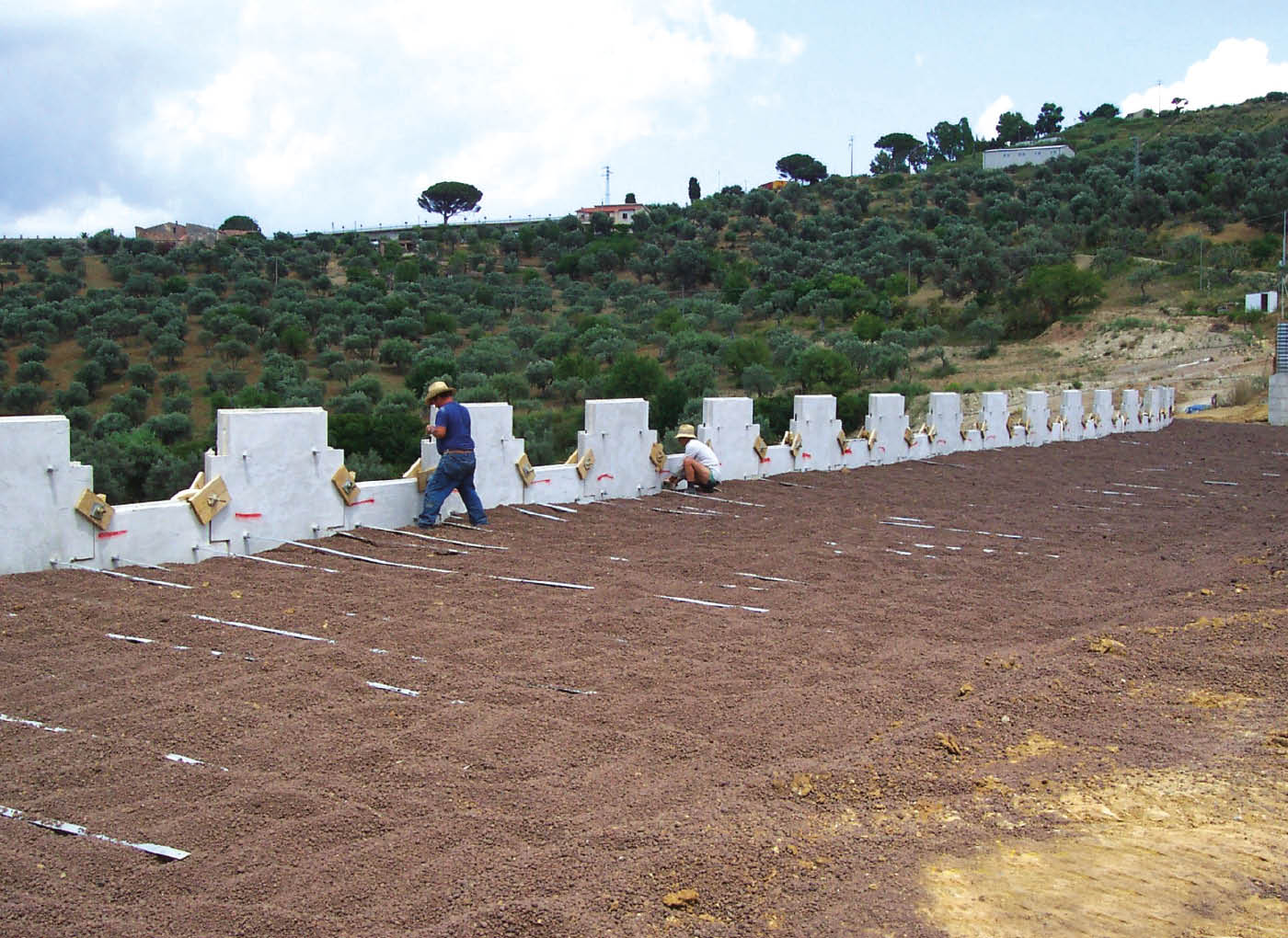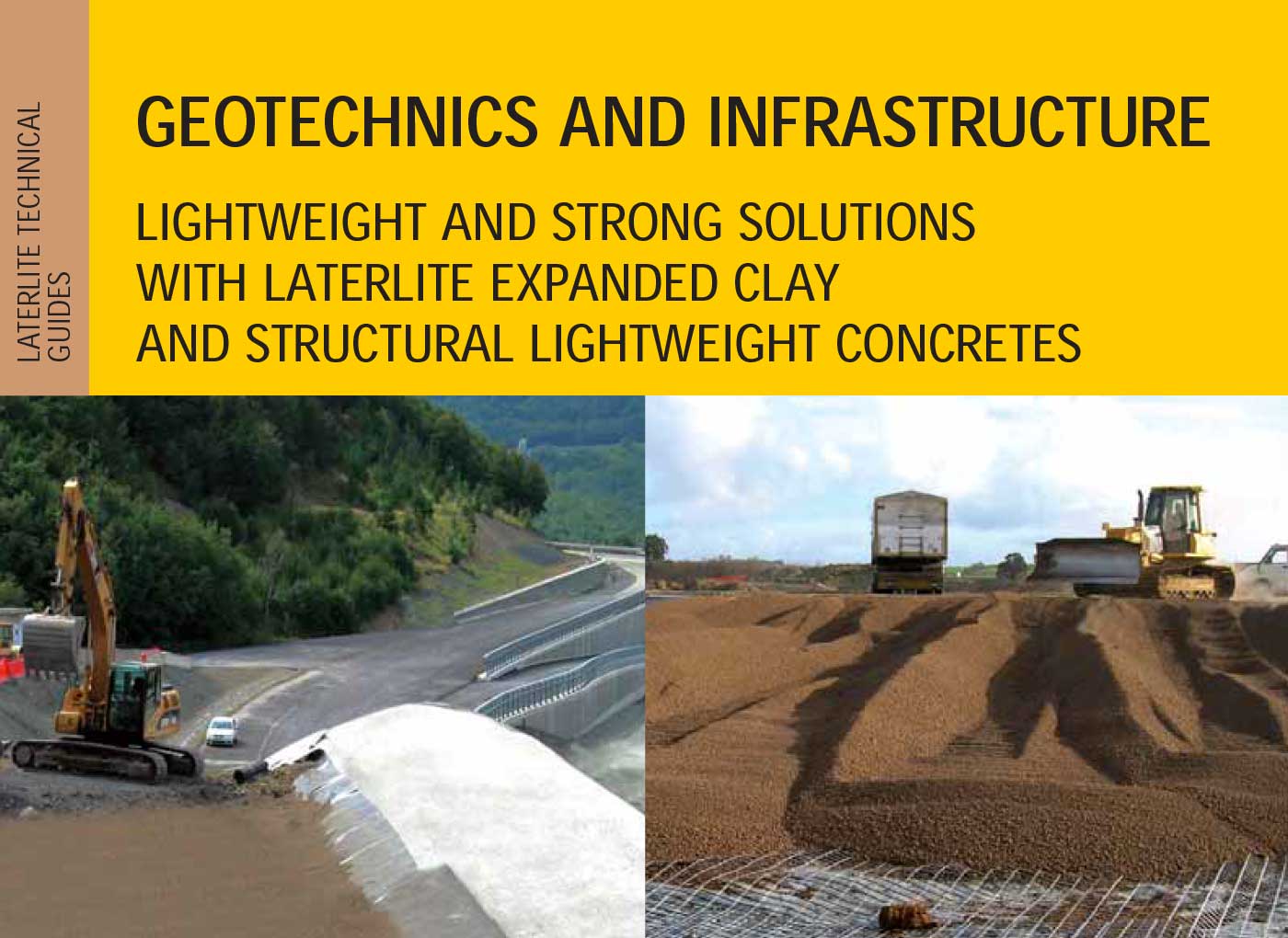The realisation of embankments on low bearing capacity soil, compressible or soft ground (such as peat, clay or silt deposits) is a relevant technical issue since ordinary fill materials have a high density which generates significant loads, causing differential or uniform settlement and displacements in the supporting soil and parasitic forces in the form of lateral pressure on neighbouring structures.
Traditional techniques foresee costly, technically complex, time-consuming and expensive soil consolidation and ground improvement interventions (temporary soil preloading with vertical drains and gravel columns, vertical rigid inclusions – pile driving / drilling – etc., etc.) prior to the execution of the embankment.
The construction of a lightweight embankment with Laterlite Expanded Clay considerably reduces – by up to 80% – the overloads by reducing the possibility of immediate, consolidation or creep settlement and of the soft soil: it therefore makes it possible to avoid, partially or totally, the costs of improving the compressible foundation soil, while ensuring a high level of safety.
In addition to preventing soil settlement and displacement, lightweight expanded clay embankments reduce the speed of possible residual settlements and therefore reduce the need for recurrent maintenance at the approaches to concrete structures (bridges, tunnels, etc.). It also eliminates deformations of the roadway that are detrimental to the safety of users, controls the lateral creep of clay deposits that are dangerous at bridge abutments and foundation piles, and solves the stability problems of the embankment, increasing its safety factor compared to conventional embankments.
By constructing the embankments using the load compensation method (replacing a volume of the heavy ground below the embankment with an equivalent volume of lightweight expanded clay) the loading on the ground is not increased (or is only increased by an extremely small amount), maintaining the original state of stress, even in embankments of considerable height.
Find out more about Laterlite lightweight embankments and lightweight embankment construction.
CONTACT US

